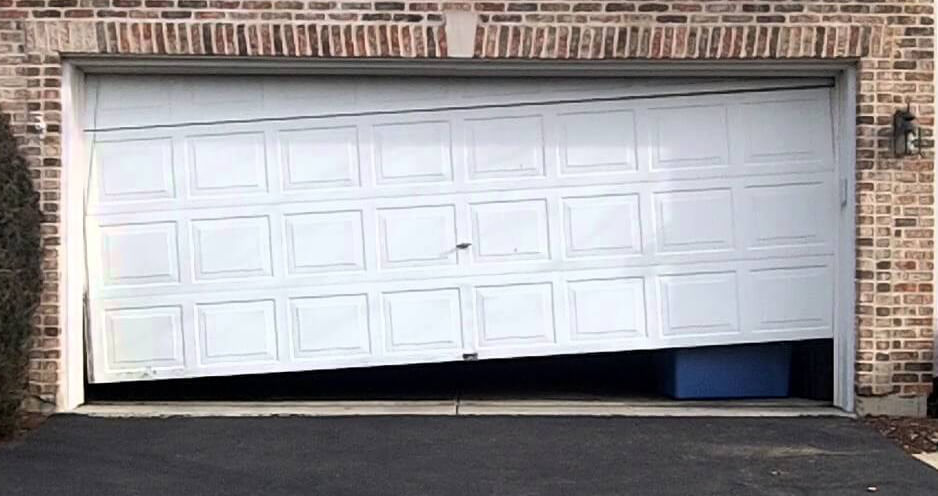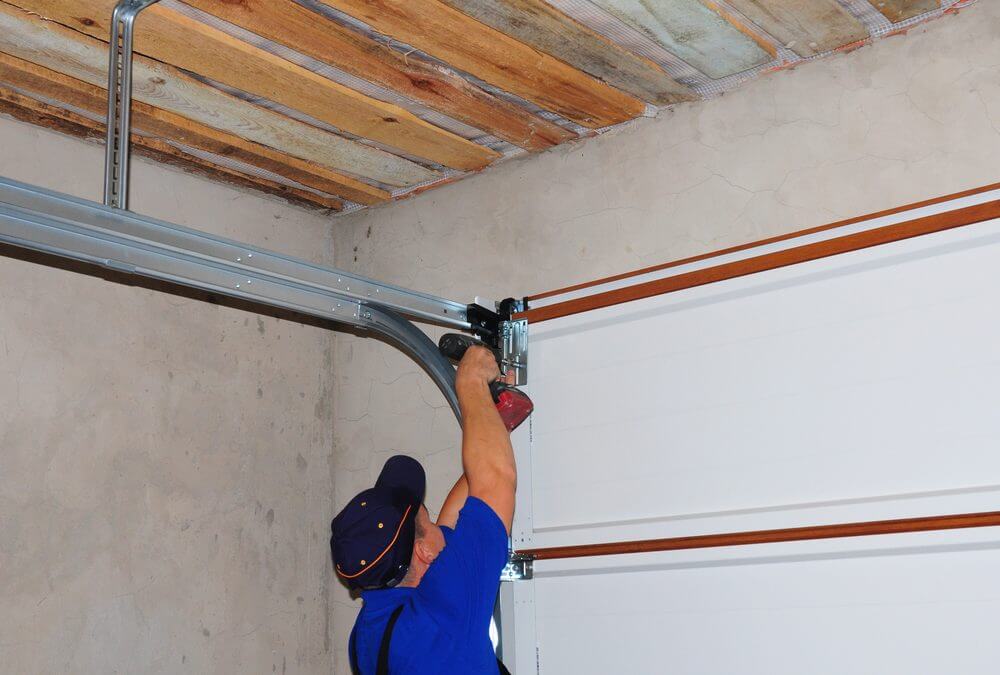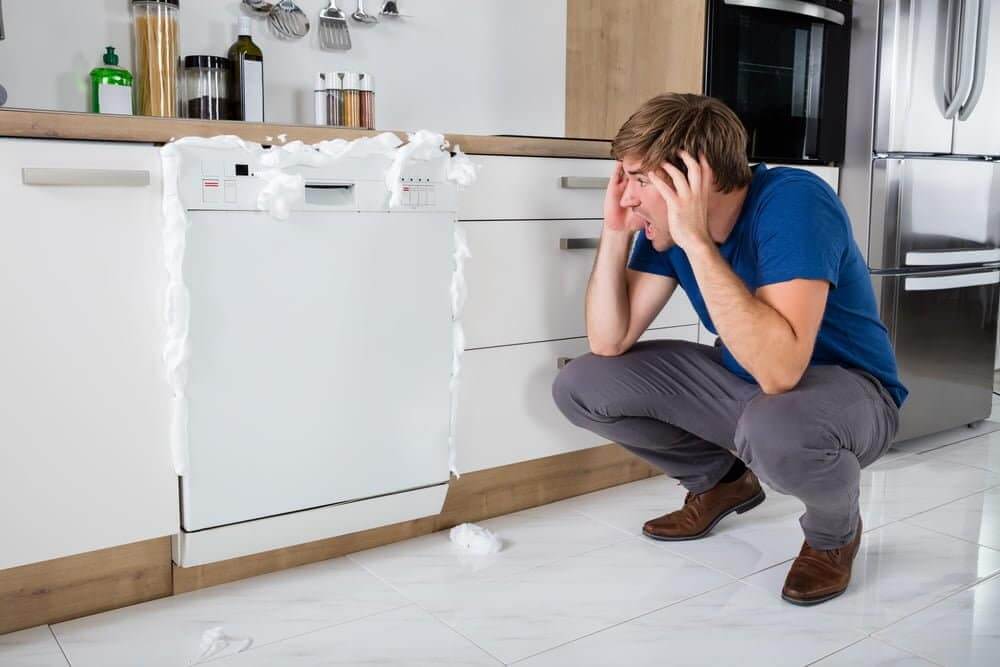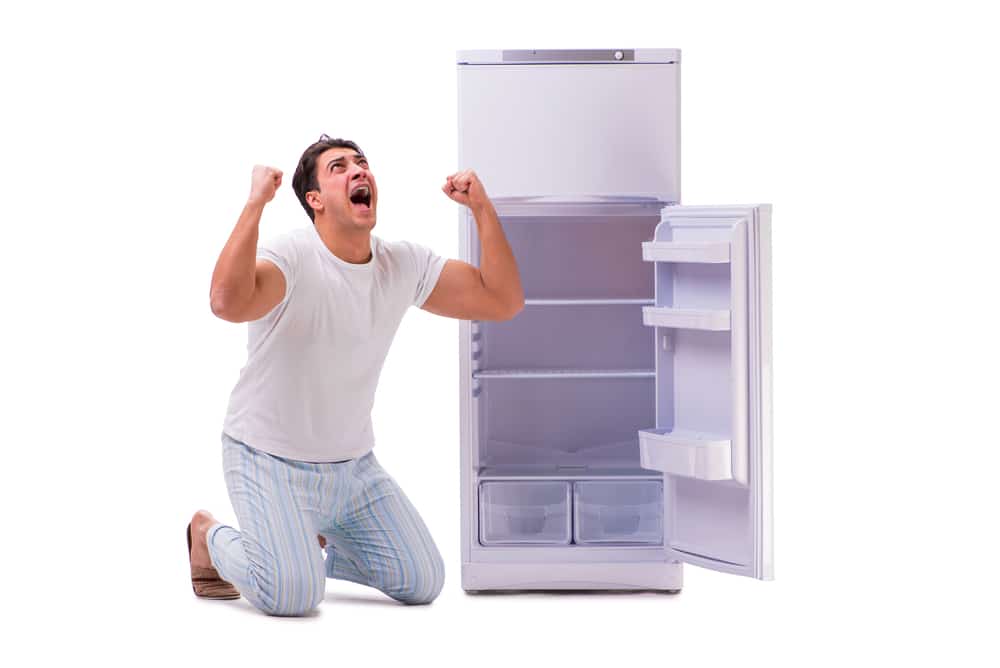
Hey there, homeowners of Brooklyn, New York! Ever had that frustrating moment when your garage door decides to throw a fit and gets jammed right when you need it to open smoothly? It’s a common woe, and we’ve all been there. A garage door is like the unsung hero of your home – always there, silently doing its job until it decides to be a tad dramatic.
Why Does It Matter?
Now, you might be thinking, “Why bother fixing it right away?” Well, my friend, a jammed garage door is not just an annoyance; it’s a security risk and a curb appeal damper. Picture this: you’re rushing out, and your garage door is stuck like it’s hit snooze on life. Not cool, right? Plus, a smoothly functioning garage door adds value to your property – something we all want, especially in the hustle and bustle of Brooklyn living.
The Usual Suspects
Before we jump into the DIY heroics, let’s figure out why your garage door turned into a prima donna. Misaligned tracks, cranky rollers, tangled cables – these are the usual suspects causing the ruckus. It’s like your garage door has a rebellious teenager phase, and we’re here to be the calm, collected parents who bring it back in line.
Fix It Right, Right Away!
Now, I know you’re busy, and fixing things might not be your idea of a fun weekend. But trust me, dealing with a jammed garage door ASAP saves you from future headaches and, possibly, an embarrassing situation when your neighbors witness your door’s diva antics.
So, let’s roll up our sleeves, grab some tools, and show that garage door who’s boss! In this guide, we’ll walk through the DIY solutions that’ll have your garage door gliding smoothly in no time. Safety first, folks! Let’s get cracking.
Safety Precautions
Before we dive into fixing that stubborn garage door, let’s talk safety. You wouldn’t jump into a lion’s den without armor, right? Well, fixing a jammed garage door is our lion’s den, and safety gear is your armor. Here’s what you need:
| Safety Gear | Purpose |
| Safety glasses | Shield those peepers from debris and dust |
| Work gloves | Protect those precious hands |
| Sturdy boots | Guard your feet from unexpected surprises |
| Adjustable wrench | A trusty sidekick for tightening loose nuts |
| Screwdriver | Your go-to tool for various garage door parts |
| Pliers | Perfect for a firm grip on tricky components |
Power Down, Wise Up!
Now, your garage door might not have teeth, but it sure has power. Before you start playing garage door doctor, cut off the electricity supply to the door opener. Safety first, my friend! Locate the power source, usually a cord hanging from the ceiling, and give it a good ol’ unplug.
With safety gear donned and power cut, take a moment to scan the scene for potential hazards. Are there loose parts hanging around? Any frayed cables playing hide and seek? Identifying and eliminating hazards before the fix is like scouting the battlefield – you want to know what you’re up against.
Remember, the goal is a smoothly operating garage door, not a trip to the emergency room. So, gear up, power down, and hazard hunt before you embark on your DIY adventure. Now, let’s assess the situation and figure out what’s causing the garage door to misbehave.
Assessing the Situation
Eyes on the Prize: Visual Inspection
So, your garage door is playing hard to get, huh? Time to put on your detective hat and conduct a thorough visual inspection. We’ll break it down into three key areas – tracks and rollers, springs and cables, and the opener mechanism.
- Tracks and Rollers:
Misaligned Tracks: Garage doors have a thing for straight tracks, but sometimes they go a bit wonky. Check for any misalignments – it’s like giving your door a chiropractic adjustment.
Debris Check: Dirt and debris can turn those smooth tracks into a bumpy road. Grab a broom or some compressed air and give those tracks a good cleaning.
Bolt and Screw Safari: Tighten any loose bolts and screws along the tracks. A little tightening can go a long way in restoring order.
- Springs and Cables:
Tangled Tales: Cables have a tendency to tango when you’re not looking. Untangle any mess you find – it’s like separating feuding siblings.
Spring Tension: Is the tension in your springs giving you palpitations? Adjust it carefully – think of it as finding the right balance in life.
Replace the Weak Links: If cables or springs show signs of wear and tear, it’s time to bid them adieu and welcome new, sturdy replacements.
- Opener Mechanism:
Power Play: Check if the power supply to the opener is in good shape. A hungry opener won’t work, so ensure it’s well-fed with electricity.
Reset the Brain: Sometimes, openers need a little reset. Refer to the manual, find that reset button, and give it a press.
Component Check: If your opener has a mind of its own, inspect its components. Worn-out gears or sprockets might need your attention.
Tools at the Ready
Now that you’ve identified the culprit – or culprits – it’s time to assemble your arsenal. Here are the tools you’ll need:
- Screwdriver: Your trusty companion for most garage door interventions.
- Adjustable Wrench: Perfect for tightening loose nuts and bolts.
- Pliers: Because sometimes, you just need a good grip.
- Lubricant: Give those moving parts a dose of the good stuff for smooth operation.
In the next section, we’ll roll up our sleeves and dive into the nitty-gritty of DIY solutions for specific garage door issues. Ready to get hands-on? Let’s fix that jammed garage door!
Step-by-Step DIY Solutions
Alright, DIY warriors, it’s time to tackle that jammed garage door head-on. We’ve identified the issues, got our tools in tow, and now it’s time for some hands-on action. Strap in and let’s roll!
Unjamming the Tracks
Aligning Misaligned Tracks
Problem: Tracks looking like they’ve had one too many drinks and swaying left and right.
Solution: Grab your trusty wrench and tighten those bolts securing the tracks. Use a level to ensure they’re straight – we’re aiming for a catwalk, not a wobble.
Cleaning Debris from the Tracks
Problem: Tracks resemble a dirt rally course, hindering smooth movement.
Solution: Break out the broom or compressed air. Sweep or blow away the debris, giving those tracks a clean slate.
Tightening Loose Bolts and Screws
Problem: The garage door is getting a bit too loose for comfort.
Solution: Check for loose bolts and screws along the tracks. A snug fit ensures your door moves with purpose.
Repairing or Replacing Damaged Rollers
Removing Faulty Rollers
Problem: Rollers playing the squeaky wheel or outright refusing to roll.
Solution: Use your trusty wrench to loosen the roller brackets. Slide out the old rollers, pop in the new ones – it’s like changing tires, but for your garage door.
Installing New Rollers
Problem: Garage door sounding like a rusty gate in a haunted house.
Solution: Grease those new rollers with lubricant. Pop them into the brackets and enjoy the sweet sound of silence.
Lubricating the Rollers for Smooth Operation
Problem: Your garage door is channeling its inner opera singer with every move.
Solution: Lubricate those rollers with a silicone-based spray. A well-lubed door is a happy door.
Fixing Issues with Springs and Cables

Identifying and Addressing Cable Tangles
Problem: Cables playing a game of Twister without an invitation.
Solution: Gently untangle the cables, ensuring they’re parallel and free from knots. No more cable acrobatics.
Adjusting Tension in the Springs
Problem: Springs acting like they’ve had too much caffeine – overly tense.
Solution: Adjust the tension according to the manufacturer’s guidelines. It’s like finding the right balance on a seesaw.
Replacing Damaged Cables or Springs
Problem: Cables or springs looking more worn out than a favorite pair of sneakers.
Solution: Bid farewell to the worn-out components and welcome the new ones. Your garage door deserves a wardrobe upgrade.
Troubleshooting the Garage Door Opener
Checking Power Supply to the Opener
Problem: Opener as lifeless as a Monday morning.
Solution: Ensure the power supply is intact. A hungry opener won’t function – feed it some electricity.
Resetting the Opener
Problem: Opener behaving like it’s stuck in a time loop.
Solution: Locate the reset button (refer to your manual). Press it and watch the opener get its groove back.
Replacing Faulty Opener Components
Problem: Opener components giving up the ghost.
Solution: Inspect the gears and sprockets. If they’re worn, consider replacements. A healthy opener equals a happy door.
In the next section, we’ll put our repairs to the test and ensure that garage door glides open and shut like a well-rehearsed dance. Ready to witness the magic? Let’s do this!
Testing the Garage Door
Congratulations, DIY maestro! You’ve tightened, adjusted, and replaced your way to a hopefully unjammed garage door. But before you throw a victory parade, let’s make sure your hard work paid off. It’s testing time!
Reconnecting Power and Testing the Door
- Power Play: Plug the opener back in. We want to make sure your garage door is waking up from its slumber.
- Remote Control Check: Grab that trusty remote control or wall-mounted button and give it a go. Does the door respond like a well-trained pup? Excellent!
Observing Smooth and Even Movement
- Open Sesame: Slowly open the garage door. Keep a keen eye on its movement. Is it smooth, or is there a stutter in its step?
- Close Encounters: Now, close the door. It should move seamlessly, without any hiccups or protests. Smooth as butter, right?
Listening for Unusual Sounds
- Ear to the Door: Listen closely as the door moves. Any screeches, squeaks, or grinding noises are signals that something might still be amiss.
- Silence is Golden: Ideally, your garage door should be as quiet as a librarian in a library. If it’s making a ruckus, we might need to fine-tune a few things.
Conducting a Balance Test
- Feather-Light or Lead-Heavy?: Disengage the opener and manually lift the door halfway. Does it stay put or feel imbalanced? A well-balanced door is the key to longevity.
- Release and Observe: Slowly release the door. It should stay in place or descend gently. If it slams shut, we might need to revisit the spring tension.
Preventive Maintenance Tips
Regular Inspection and Lubrication:
- Monthly Patrol: Take a stroll around your garage door. Look for loose bolts, frayed cables, or anything out of the ordinary.
- Lubrication Love: Every three to six months, show your door some love with a lubrication session. Rollers, tracks, and springs – they all crave that slick goodness.
Tightening Bolts and Screws:
- Quarterly Tune-Up: Get your wrench out and give those bolts and screws a little twist. A tight garage door is a happy garage door.
Testing the Door Balance Periodically:
- Bi-Annual Balance Check: Keep that door balanced. It’s like maintaining the equilibrium in your garage door universe. If it feels off, a tweak here and there will do the trick.
Seeking Professional Help for Major Issues:
- Know When to Call: If the issue goes beyond your DIY superhero abilities, don’t hesitate to call in the pros. They’re the Avengers of the garage door world.
Final Words
You did it! Your garage door is back in action, opening and closing with the grace of a ballet dancer. Regular maintenance and a bit of DIY TLC go a long way in keeping your garage door happy and hassle-free. Now, go ahead, park that car, and revel in the satisfaction of a job well done. Your garage door salutes you!
Frequently Asked Questions (FAQs)
Q1: Why is my garage door jammed?
A: Garage doors can get jammed for various reasons, including misaligned tracks, damaged rollers, tangled cables, or issues with the opener mechanism. Regular maintenance can help prevent these issues.
Q2: Can I fix a jammed garage door myself?
A: In many cases, yes. DIY solutions like aligning tracks, replacing rollers, and addressing cable tangles are manageable for homeowners. However, if you’re unsure or facing complex issues, it’s wise to seek professional help.
Q3: What safety precautions should I take before fixing my garage door?
A: Safety first! Gear up with safety glasses, work gloves, and sturdy boots. Disconnect the power to the door opener, and inspect the area for potential hazards like loose parts or frayed cables before starting any repairs.
Q4: How often should I lubricate my garage door?
A: It’s recommended to lubricate your garage door’s moving parts, including rollers, tracks, and springs, every three to six months. This helps maintain smooth operation and prevents premature wear and tear.
Q5: What tools do I need for DIY garage door repair?
A: Essential tools include a screwdriver, adjustable wrench, pliers, and lubricant. Depending on the issue, you might also need replacement rollers, cables, or springs.
Q6: How can I test if my garage door is balanced?
A: Disengage the opener and manually lift the door halfway. If it stays in place, it’s balanced. Slowly release it – it should descend gently. If it slams shut or feels imbalanced, adjustments to spring tension may be needed.
Q7: Can I reset my garage door opener myself?
A: Yes, most garage door openers have a reset button. Refer to your opener’s manual to locate it and follow the instructions for a reset. If issues persist, it might be a good idea to consult a professional.
Q8: When should I seek professional help for garage door repairs?
A: If you encounter complex issues, electrical problems, or if your DIY attempts don’t resolve the problem, it’s time to call in the experts. Professional garage door technicians have the skills and tools to handle more challenging issues safely.
Q9: Is preventive maintenance necessary for garage doors?
A: Absolutely! Regular inspection, lubrication, and tightening of bolts and screws can prevent potential issues. It’s like giving your garage door a wellness check to ensure it stays in top-notch condition.
Q10: Can weather conditions affect garage door performance?
A: Yes, extreme weather conditions, especially temperature fluctuations, can impact the performance of garage doors. Regular maintenance helps address weather-related wear and tear, ensuring your garage door functions smoothly in all seasons.






